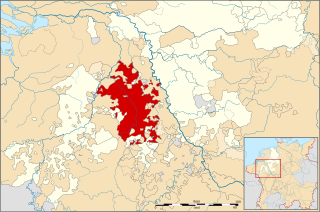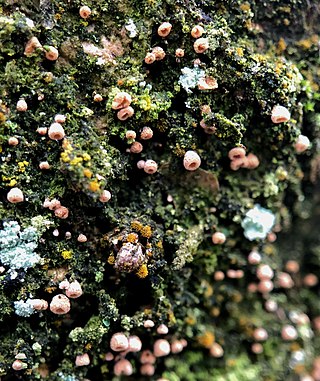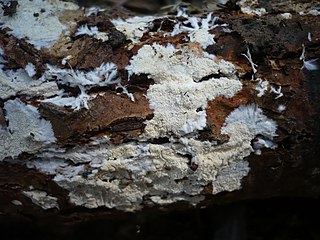Related Research Articles

Berg was a state—originally a county, later a duchy—in the Rhineland of Germany. Its capital was Düsseldorf. It existed as a distinct political entity from the early 12th to the 19th centuries.

Forschungszentrum Jülich (FZJ) is a national research institution that pursues interdisciplinary research in the fields of energy, information, and bioeconomy. It operates a broad range of research infrastructures like supercomputers, an atmospheric simulation chamber, electron microscopes, a particle accelerator, cleanrooms for nanotechnology, among other things. Current research priorities include the structural change in the Rhineland lignite-mining region, hydrogen, and quantum technologies. As a member of the Helmholtz Association with roughly 6,800 employees in ten institutes and 80 subinstitutes, Jülich is one of the largest research institutions in Europe.

The Duchy of Jülich comprised a state within the Holy Roman Empire from the 11th to the 18th centuries. The duchy lay west of the Rhine river and was bordered by the Electorate of Cologne to the east and the Duchy of Limburg to the west. It had territories on both sides of the river Rur, around its capital Jülich – the former Roman Iuliacum – in the lower Rhineland. The duchy amalgamated with the County of Berg beyond the Rhine in 1423, and from then on also became known as Jülich-Berg. Later it became part of the United Duchies of Jülich-Cleves-Berg.

The Duchy of Cleves was a State of the Holy Roman Empire which emerged from the medieval Hettergau. It was situated in the northern Rhineland on both sides of the Lower Rhine, around its capital Cleves and the towns of Wesel, Kalkar, Xanten, Emmerich, Rees and Duisburg bordering the lands of the Prince-Bishopric of Münster in the east and the Duchy of Brabant in the west. Its history is closely related to that of its southern neighbours: the Duchies of Jülich and Berg, as well as Guelders and the Westphalian county of Mark. The Duchy was archaically known as Cleveland in English.

Archduchess Maria of Austria was the daughter of Emperor Ferdinand I from the House of Habsburg and Anna of Bohemia and Hungary.

William of Jülich-Cleves-Berge was a Duke of Jülich-Cleves-Berg (1539–1592). William was born in and died in Düsseldorf. He was the only son of John III, Duke of Jülich-Cleves-Berg, and Maria, Duchess of Jülich-Berg. William took over rule of his father's estates upon his death in 1539. Despite his mother having lived until 1543, William also became the Duke of Berg and Jülich and the Count of Ravensberg.

The County of Ravensberg was a historical county of the Holy Roman Empire. Its territory was in present-day eastern Westphalia, Germany, at the foot of the Osning or Teutoburg Forest.

The Cyphellaceae are a family of fungi in the order Agaricales. The family contains 16 genera and, in 2008, 31 species.

The Meruliaceae are a family of fungi in the order Polyporales. According to a 2008 estimate, the family contains 47 genera and 420 species. As of April 2018, Index Fungorum accepts 645 species in the family.
Columnodontia is a fungal genus in the family Meruliaceae. A monotypic genus, it contains the single species Columnodontia resupinata, a toothed crust fungus found in Borneo. Both the species and genus were described as new to science by Swiss mycologist Walter Jülich in 1979. The main distinguishing characteristic of the genus is the glistening, projecting columns of crystals that make up the spines.

Dermatocarpon is a genus of lichens in the family Verrucariaceae.
Granulobasidium is a genus of fungi in the family Cyphellaceae.

Crustomyces is a genus of fungi in the family Cystostereaceae. The widespread genus contains three species.

Gyrophanopsis is a fungal genus in the family Meruliaceae. Circumscribed by Swiss mycologist Walter Jülich in 1979, the genus contains two species of crust fungi: the type, Gyrophanopsis zealandica, and G. polonensis, added to the genus in 1991.
Adustomyces is a fungal genus in the family Pterulaceae. The genus is monotypic, containing the single resupinate species Adustomyces lusitanicus, found in Europe and Africa. Adustomyces was described by Swiss mycologist Walter Jülich in 1979.

Heraldic courtesy or courtoisie (French) is a practice typical of the heraldry of Germany, in which coats of arms are mirrored if necessary so that animate charges, such as lions, face the center of a composition. This may be done in arms of alliance, as in the first illustration here; or within a single shield, such as that of the dukes of Guelders and Jülich in which the gold lion of Guelders turns to face the black lion of Jülich.
SC Jülich is a German association football club from the city of Jülich, North Rhine-Westphalia. The club distinguished itself by winning three consecutive German amateur football championships from 1969 to 1971 while part of the third division Amateurliga Mittelrhein.

William Otto, Lord of Arkel was the male member of the House of Arkel. He styled himself Lord of Arkel, although his father had lost control of Arkel in 1412, and William's attempt to regain it, failed. He positioned himself as a potential successor of the childless Duke Reinald IV of Guelders and Jülich; however, this attempt was also unsuccessful.
Dermatocarpon vellereum is a species of lichen belonging to the family Verrucariaceae.